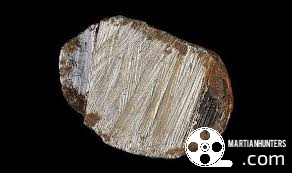In the realm of minerals, the Earth is known to harbor an incredible diversity of substances, each with its own unique properties and origins. However, in recent years, scientists have discovered that some minerals are not confined to our planet alone. One such fascinating discovery is the mineral known as "edscottite," a rare carbon mineral that was first identified in a meteorite. This mineral's origin and composition offer a window into the dynamic and complex processes that occur in the far reaches of space.
Discovery and Naming:
Edscottite was first discovered in the Wedderburn meteorite, which fell in Wedderburn, Victoria, Australia, in 1951. It wasn't until more than six decades later, in 2019, that researchers were able to formally identify and name the mineral. The mineral is named after Edward R.D. Scott, a renowned meteorite researcher, and cosmochemist.
Composition and Structure:
Edscottite is a hexagonal polymorph of carbon, which means it shares the same chemical composition (carbon) as graphite, diamond, and lonsdaleite, but its atoms are arranged in a different crystalline structure. Unlike its well-known counterparts, edscottite's crystal lattice structure is unique, and this structural arrangement contributes to its distinct properties.
Formation and Origin:
Edscottite's origin lies in the cataclysmic processes that occur in space. It is believed to form during high-energy impacts, such as those that happen when a meteorite collides with the Earth or another celestial body. These impacts generate extreme pressures and temperatures that can cause the crystalline structure of carbon to rearrange into the unique lattice structure of edscottite.
Significance and Research:
The discovery of edscottite is significant for several reasons. Firstly, it adds to the growing list of minerals that have been found beyond our planet. This further emphasizes the interconnectedness of the cosmos and highlights the complex processes occurring in space. Secondly, edscottite's unique crystal structure has implications for our understanding of high-energy impact events, which have shaped the surfaces of planets and moons in our solar system. Studying minerals like edscottite helps researchers model and comprehend the extreme conditions that shape celestial bodies.
Challenges and Future Investigations:
Due to its rarity and the difficulty of studying extraterrestrial minerals, edscottite remains a subject of ongoing research. Scientists are keen to uncover more information about its formation, distribution in meteorites, and potential applications. However, obtaining samples of edscottite is a significant challenge, as it is found in minute quantities within meteorites. Advanced analytical techniques, such as electron microscopy and X-ray diffraction, are used to study these samples in detail.
Jim's Thoughts...
Edscottite is a captivating example of how minerals can provide insights into the cosmic processes that shape our universe. Its discovery in a meteorite highlights the dynamic and violent nature of space impacts, and its unique structure adds to our understanding of carbon's behavior under extreme conditions. As our exploration of space continues, it's likely that edscottite will remain a subject of interest and investigation, shedding light on the mysteries of our universe.


Comments
Post a Comment